Swann ADW-410 Handleiding
Swann
Bewakingscamera
ADW-410
Bekijk gratis de handleiding van Swann ADW-410 (2 pagina’s), behorend tot de categorie Bewakingscamera. Deze gids werd als nuttig beoordeeld door 71 mensen en kreeg gemiddeld 4.6 sterren uit 36 reviews. Heb je een vraag over Swann ADW-410 of wil je andere gebruikers van dit product iets vragen? Stel een vraag
Pagina 1/2

123
456
789
1
EN
Digital Monitor & Recorder
Quick Start Guide
Welcome!
Lets get started.
Congratulations on the purchase of your Digital Monitor & Recorder device. This quick start
guide will assist you with getting your device up and running as soon as possible. We recommend
that you connect everything and give it a try before you do a permanent installation, to make
sure nothing was damaged during shipping.
A) Power Switch - Switch this to the ON
position to turn the device on. Switch to the
OFF position to turn the device off.
B) Micro-SD Card Slot - Insert a Micro-SD
card into this slot. A Micro-SD card is required
to record video events. It is compatible with
cards up to 32GB in size.
C)
Power Socket - Connect the power
adapter here.
As the device has a built-in
battery, disconnecting the power adapter will
not turn the device off. Use the power switch
to turn the device off.
QH_410PK2260214E | © Swann 2014
AGetting to know your device
CStep Two DStep Three EConnect to your Home Network
Screw the included antenna
clockwise to the gold
coloured connection on the
camera. Continue until it is
securely fastened. Position
the antenna upright for best
reception quality.
You should now see a live video
image appear on-screen. For a full
explaination of the various icons
and options available, please have
a look at the setup guide included.
A B C
H
F
D
E
G
D) Antenna - Adjust the antenna so they are
placed vertically.
E) Reset - If the device becomes unrespon-
sive, use a paperclip to reset.
F) Speaker - Audio transmitted from the
camera and audio alerts from the device will
be heard from here.
G) Stand - Pull out the stand so you can place
the device on a flat surface for easy viewing.
H) LAN - Connect this to your home network
so you can use the Swann DigiView app on
your mobile device.
J
I
K
I) Event LED - This LED will light up blue
whenever an event has occurred. When that
particular event has been viewed on the device,
the LED will turn off.
J) Battery LED - This LED will light up green
to indicate that the battery is fully charged.
When charging the battery, the LED will
light up orange. When the battery is run-
ning very low, the LED will turn red and
start flashing.
K) Home Button - Press the home button to
access the main menu. Press it again to view
a live video image from your camera(s). For
a full explaination of the various icons and
options available, please have a look at the
setup guide included.
BStep One
Peel off the plastic cover that is protecting
the LCD display.
Connect the DC 5V power supply
to the power input on the device.
L) IR (Infrared) LEDs -
The camera will use
these in low-light conditions to generate
a black and white image, even in total
darkness.
M) Power LED - The power LED will turn
red to indicate that the camera is working.
When pressing the pair button on the
camera, the LED will momentarily flash.
N) Light Sensor - Detects the amount of
light available and turns on the IR LEDs
when necessary.
O) PIR (Passive infrared) Sensor - This
is an electronic sensor that measures
infrared light radiating from objects in its
field of view.
P) Pair Button - Press to pair the camera
with the Digital Monitor & Recorder device.
Please have a look at the included setup
guide for more information about pairing.
Q) Antenna - The included antenna
connects here.
M
L
N
O
P
Q
Connect the DC 9V
power supply to the
other end of the
power cable.
USB In t er ne t Et her ne t
432
Flick the power switch to the ON position. You
will momentarily see a Swann logo and a “No
Signal” message will appear on-screen. Don’t
worry, this is normal.
An Ethernet connection is required
to use the Swann DigiView app on
your mobile device. Connect the
Ethernet cable (supplied) to the
LAN connection on the device,
and then connect the other end to
a spare port on your router.

10 11 12
13 14 15
16 17 18
To monitor the front of the house, whether it is the front garden, driveway or the entrance to
your garage, it is recommended to install the camera where the roof meets the walls of the
house, as illustrated below. This will shelter the camera from the elements, have a better field
of view, and less likely to be vandalized.
It has been found that most burglars will enter your home through the front door, so it is very
important that you install a camera here. It is recommended to install the camera either above
the door or to the side space permitting. Mount the camera in an elevated position so it is out of
range of vandals or would be burglars. Placing the camera at a slight angle will allow you to see
who is approaching your front door as well as giving you the ability to have facial recognition.
Your backyard is mostly filled with a shed with lawn and garden tools, recreational equipment
and children’s toys. It’s a good idea to install a camera so that you have an entire overview of the
backyard. Like the cameras installed at the front of the house, it is recommended to install the
camera where the roof meets the wall of the house. If you have a side gate or more than one
entrance to the backyard, you may want to have an additional camera that is focused to that
area.
It’s recommended that you place cameras inside the house that have high traffic areas such as
entry and exit points (front door), hallways and staircases (if applicable). Other ideal locations
are next to windows and rooms that have high priced valuables such as electronics, antiques
and jewellery.
The Field of View produced by a camera is the area that the camera can see. It is an important
factor to consider as it determines not just what the camera can see, but also the level of detail
that is visible at a given distance. Cameras with a smaller lens, also known as a wide-angle
lens, produce a greater Field of View than cameras with a larger lens. This means that the
camera can see a large area but the objects will appear smaller within the scene area. This is
useful if you want to monitor an entire room or a yard. Cameras with a larger lens also known
as narrow-angle have a smaller Field of View. They can see a limited area, but objects will
appear larger within the scene area. This is useful if you want to monitor a specific target such
as a doorway or entrance.
Lighting
• For best results do not point the camera towards a light source.
• Pointing the camera towards a glass window intending to see outside may result in a poor
image because of glare and lighting conditions inside and outside.
• Don’t place the camera in a shaded area that is looking into a well lit area as this will result
in a poor display. The light to the sensor located at the front of the camera needs to be the
same as the light at the focal target for best results.
• As the camera uses infrared LEDs to see at night, it’s recommended to clean the lens from
time to time if the picture degrades.
BFront of House and Driveway
DBackyard and Side Entrance EIndoors
FCamera Field of View GLighting & Environment Tips H
CFront Door
QH_410PK2260214E | © Swann 2014
A
Confused on which location to install your cameras? The cameras included with your security
system can be installed in a number of different locations. Camera location can depend on the
following -
Camera Location Tips EN
You may need to install multiple cameras if
you want to focus on specific areas that you
would like to monitor, for example, one for the
driveway, the other on the garage entrance.
1. Distance from the
camera to the record-
ing device.
2. Environmental con-
ditions such as rain or
snow.
3. Lighting conditions
during the day and
night.
4. The area that you
would like to monitor.
When you position cameras correctly, you can eliminate the need for additional cameras to cover
your target area and maximise the efficiency of your security system. On the flip side, if you posi-
tion cameras incorrectly, it can lead to blind spots or to have objects that are not visible or too far
for the cameras to view in detail. Keep these points in mind to get the most out of your security
system.
Mount cameras at an elevated position - Mounting your cameras at an elevated position, can keep
your cameras out of range of vandals or would be burglars. It also allows your camera to have a
high vantage point increasing its viewing area.
Cover your target area - When placing cameras, make sure you provide ample coverage, but not
in excess. For example, if you are trying to cover a backyard gate, don’t zoom in to only have the
gate in frame. Position the camera to cover part of your backyard so you capture as much area as
possible without sacrificing video quality.
Install the camera
where the roof
meets the walls
of the house.
Place the camera at a slight angle.
This will focus on the
side entrance.
Fixed Lens vs. Varifocal Lens
A Fixed Lens is where the camera’s focal
length (Field of View) is permanently set
and cannot be adjusted by the user.
A Varifocal Lens is where the camera’s
lens can be manually adjusted by the
user. This allows for greater flexibility
to optimize the camera picture for your
specific needs.
Environment
• Make sure the power connections are not directly exposed to water or moisture and shielded
from other outdoor elements.
• Weatherproof only means that the camera can be exposed to weather such as rain and snow.
Weatherproof cameras cannot be submerged under water.
• Do not expose the camera where rain and snow will hit the lens directly.
• Cameras geared for cold weather may work in extreme conditions as low as -25° as the
camera produces heat when plugged in.
When installing cameras outside, it is recommended to install the provided data & power cable
away from the elements so it prevents them from deteriorating over time. Whilst cabling, avoid
areas that have a high amount of electrical equipment where electrical interference is expected.
This can create all types of interference to the video picture. Also avoid sharp bends, which can
affect cable impedance and cause interference to the video picture. If you’re using cable ties,
do not over tighten them and avoid using a staple gun to secure as this can potentially damage
the cable. There may be circumstances where you have to join multpiple cables together. Go
to your hardware store, purchase some electrical tape and use this to seal the connection(s)
between each cable. This will prevent moisture and dust forming on the connection(s).
Camera Cables
Summary
1. Protect the cable from the elements to avoid deterioration.
2. Avoid electrical equipment where electrical interefence is expected.
3. Avoid sharp bends and do not bend the cable greater than 90 degrees.
4. Do not overtighten when using cable ties.
5. Avoid using a staple gun to secure the cable to a wall.
6. Do not stretch or apply force greater than 25lbs/11kgs.
7. Use electrical tape to seal the connection(s) when joining multiple cables together.
Wide Angle
Fixed Lens
3.6mm
Narrow Angle
Fixed Lens
6.0mm
This camera will
focus on the garage
entrance.
This camera
will focus on the
driveway entrance.
This will focus on the
entire backyard.
Have a look at the image(s) on the Digital Monitor
& Recorder device first before installing the cameras
permanently.
Most burglars will knock on the front
door first to see if anyone is at home.
Have a look at the image(s) on the Digital Monitor
& Recorder device first before installing the cameras
permanently.
Have a look at the image(s) on the Digital Monitor
& Recorder device first before installing the cameras
permanently.
Have a look at the image(s) on the Digital Monitor
& Recorder device first before installing the cameras
permanently.
Product specificaties
| Merk: | Swann |
| Categorie: | Bewakingscamera |
| Model: | ADW-410 |
| Kleur van het product: | Wit |
| Soort: | IP-beveiligingscamera |
| Gebruiksaanwijzing: | Ja |
| Montage gereedschap: | Ja |
| Vormfactor: | Rond |
| Ondersteuning voor plaatsing: | Binnen |
| Connectiviteitstechnologie: | Bedraad |
| Ethernet LAN: | Ja |
| Frequentieband: | 2.4 GHz |
| Montagewijze: | Plafond/muur |
| Maximum resolutie: | 1280 x 720 Pixels |
| Minimale belichting: | - Lux |
| Nachtvisie: | Ja |
| Inclusief AC-adapter: | Ja |
| Microfoon, line-in ingang: | Ja |
| Type beeldsensor: | CMOS |
| Ingebouwde microfoon: | Ja |
| Maximale afstand: | 50 m |
| Dag/nacht modus: | Ja |
| Nachtkijker afstand: | 12 m |
| Aantal verlichtingen LEDS: | 20 |
| Wifi: | Nee |
| Bedrijfstemperatuur (T-T): | -10 - 50 °C |
| Lens diameter: | 3.8 mm |
| Kijkhoek lens, horizontaal: | 60 ° |
Heb je hulp nodig?
Als je hulp nodig hebt met Swann ADW-410 stel dan hieronder een vraag en andere gebruikers zullen je antwoorden
Handleiding Bewakingscamera Swann
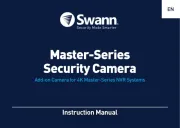
16 Augustus 2025

15 Augustus 2025

15 Augustus 2025

15 Augustus 2025

14 Augustus 2025

14 Augustus 2025

14 Augustus 2025

14 Augustus 2025

14 Augustus 2025

14 Augustus 2025
Handleiding Bewakingscamera
- SPC
- CRUX
- Vivotek
- Gira
- Yale
- Wasserstein
- Brinno
- Astak
- Marquant
- Stabo
- Securetech
- Kramer
- Equip
- Ion
- Trebs
Nieuwste handleidingen voor Bewakingscamera

2 September 2025
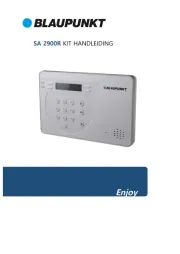
2 September 2025
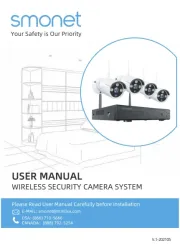
2 September 2025

2 September 2025
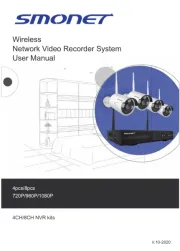
1 September 2025
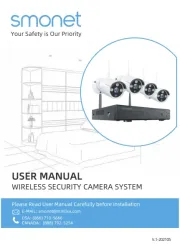
1 September 2025

1 September 2025
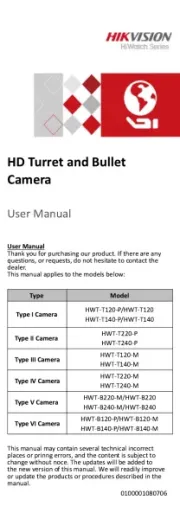
1 September 2025
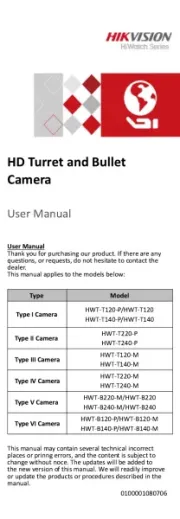
1 September 2025

1 September 2025